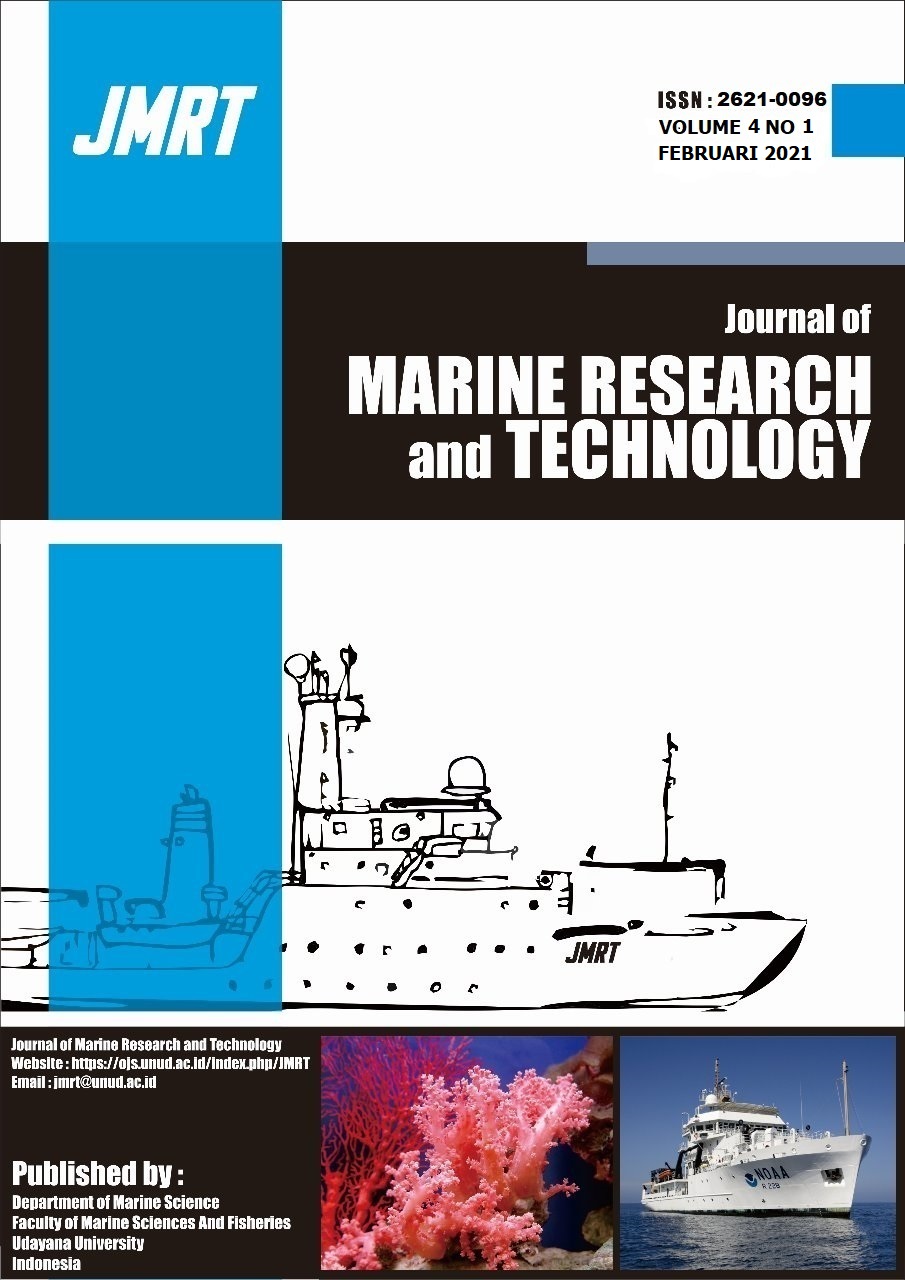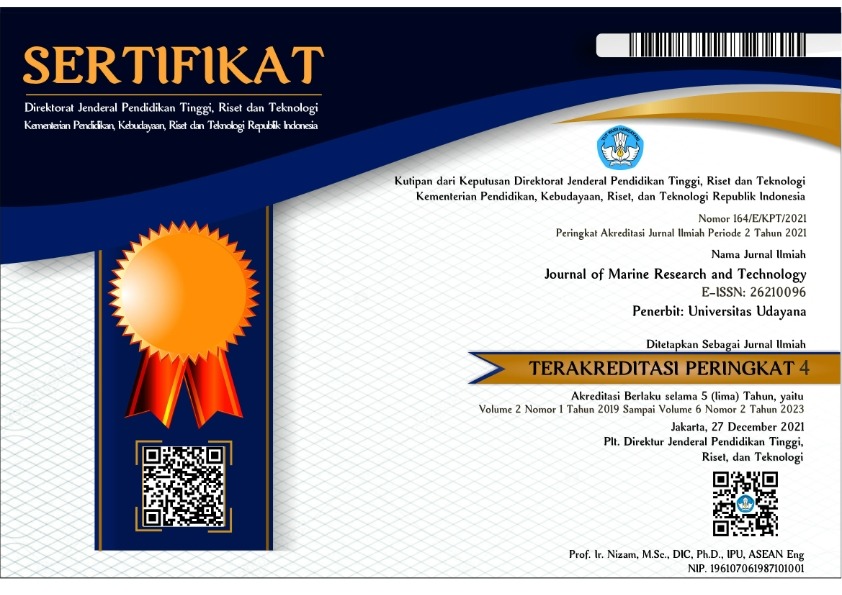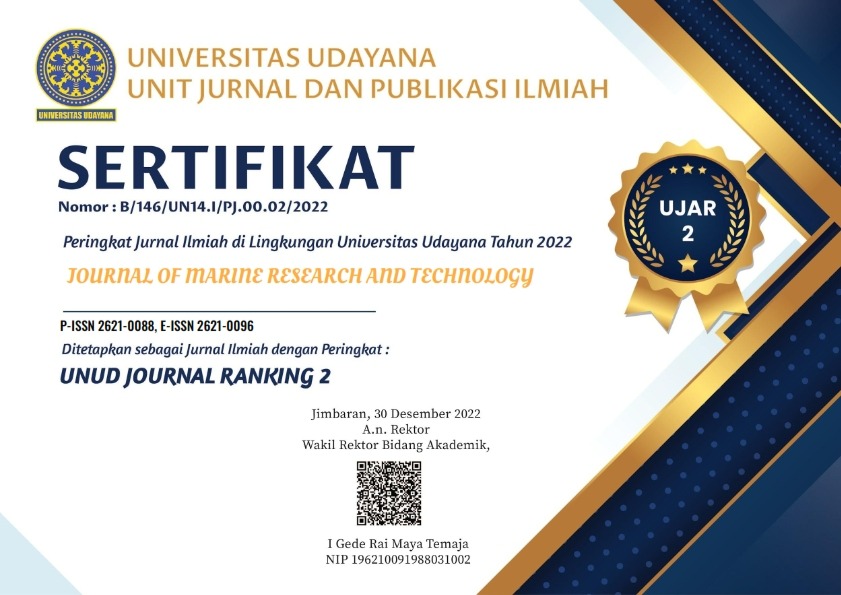Struktur Vegetasi Mangrove berdasarkan Karakteristik Substrat di Pantai Karang Sewu, Gilimanuk Bali
Organic Ingridients; Mangrove; Substrates; Vegetation Structure
Abstract
Karang Sewu Beach is one of the areas in the West Bali National Park (TNBB) which has a natural mangrove ecosystem. One of parameters affecting mangrove growth is substrate. This research aims to determine the vegetation structure, substrate characteristics, and different vegetation groups of mangroves based on its substrate characteristics in Karang Sewu Beach. This study collected the data on vegetation structure using a plotted line method with 2x2, 5x5, 10x10 and 20x20 meters transects. Substrate texture was analyzed using a pipette method while total organic material was analyzed using the Loss on Ignition (LOI) method. Mangrove vegetation was categorized based on substrate characteristics using the descriptive quantitative method. Results showed there were nine species of mangrove found in Karang Sewu Beach, namely Ceriops tagal, Sonneratia alba, S. caseolaris, Rhizophora apiculata, R. mucronata, R. stylosa, R. lamarckii, Lumnitzera racemosa, and Avicennia marina. INP in the first station was dominated by R. apiculata for tree levels (152,88 %), pole (174,24 %), sapling (139,04 %), and seedling (111,48 %). R. lamarckii dominated the second station with a tree level value of 226,94 % while C. tagal dominated for pole level (220,82 %), sapling (243,65 %), and seedling (182,94 %). INP in the third stasion was dominated by C. tagal for pole level (103,68 %), sapling (98,77 %) and seedling (95,51 %). Mangrove substrate in Karang Sewu Beach was characterized as having a sand like texture, dusty loam, sandy loam, loamy sand, and sandy clay with moderate organic matter (2.44 %) to low (0.79 %). Mangrove vegetation grouping based on substrate characteristics in Karang Sewu Beach was different in general. A. marina is found in the middle zone, where this species is usually found in the front zone.
Downloads
Copyright Notice
The copyright to this article is transferred to Journal of Marine Research and Technology (JMRT). The copyright transfer covers the exclusive right and license to reproduce, publish, distribute and archive the article in all forms and media of expression now known or developed in the future, including reprints, translations, photographic reproductions, microform, electronic form (offline, online) or any other reproductions of similar nature.






